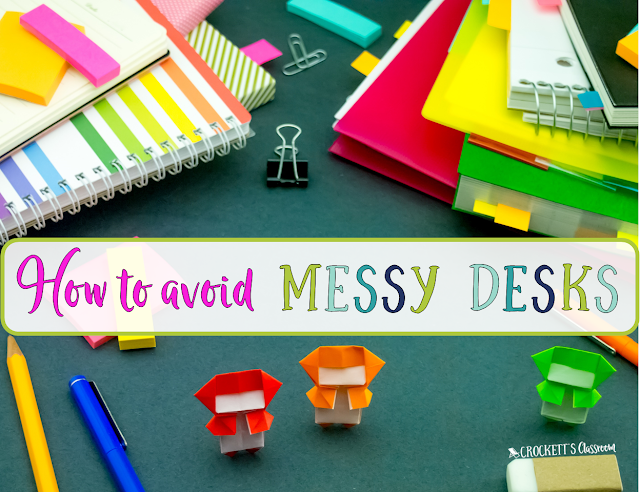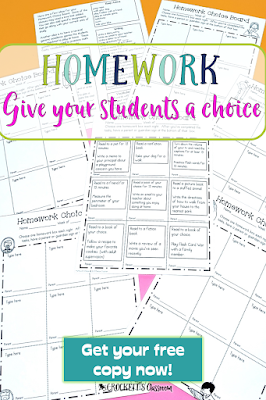Organization does not happen by itself. Your students can be organized, but you have to teach them.
I can’t tell you how many times my
lessons and class activities have been delayed or interrupted because a student
can’t find the paper, scissors, glue stick, or other supply he or she needs.
Organization may take a little extra time , but it will save so much
time and so many headaches later.
The first organization I teach my
students is how everything should be stored in their desks. I’m a real stickler and require that everyone follow
the same desk arrangement.
I have a specific way student binders, softbound workbooks, spiral notebooks, hardbound books, free-reading books, and a pencil box are placed in the desk.
One key is to keep the softbound workbooks and the hardbound books separate.
Those soft workbook covers will quickly be destroyed when heavier hardbound books are slid on
top.
The binder has to go on the right because of the slant. You want everything that's put on top to slide to the side of the desk and not to the middle of the desk. On top of the binder, students put all of
their soft bound workbooks and spiral notebooks. If they have a paperback-free
reading book, it goes on this stack, too.
On the left side, students stack
any hardbound books.
Their pencil box goes on top.
With this arrangement there is less of a chance that books will be damaged when they are taken out or put back into the desks.
Tips:
-Give your students time, once a week, to empty, clean and reorganize their desks. This will cut down on the papers and trash that gets shoved to the back of the desk throughout the week.
-Let students keep two pencils and an eraser in the small pencil tray in the desk opening. All other supplies should be in the pencil box.
-Only keep the textbooks they use every day in their desks. Store other textbooks on a shelf and work out a system for handing them out and collecting them for your lessons.
-If a box of crayons is too large to fit in the pencil box, it will probably fit between the two stacks of books.
-A book baggie to hold paperback books from your class library will help protect these smaller books.
-Give students enough transition time to put things away where they belong. When you're in a rush it's hard to stay organized.
-Praise students who have neat and organized desks. You may want to give random notes of encouragement when you see a well-organized desk. My room has a Gnome Patrol. The patrol is usually me, but sometimes I assign students to be the Gnome Patrol for the week. At random times, without an announcement, the Gnome Patrol will leave a card in an organized desk. Students love finding this little card in their desk.
The Gnome Patrol cards are included in my SPARKLE Positive Behavior Toolbox. Click here to check it out.
What tips do you have for keeping student desks organized?




















